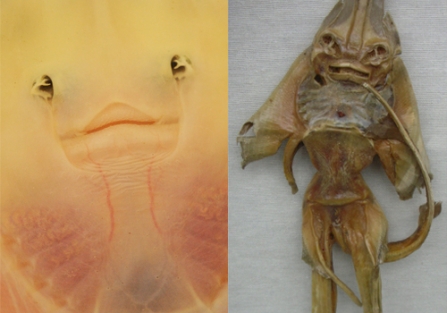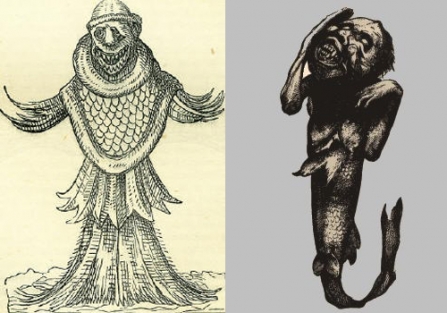There are few things on earth more mysterious than the oceans - their fathomless depths, still mostly unseen by humans, are one of the last great unknowns of our planet. There's even a name, thalassophobia, for the fear of what could be hiding in the deep. The little we have explored (by some estimates only 5%) contains species stranger than we could ever have imagined.
In centuries past, when even less was understood about our seas, their aura of mystery made them the ideal subject for marine hoaxes. In Europe the most common of these were Jenny Hanivers: modified remains of skates and rays touted as demons, dragons, or basilisks. These animals were chosen for their body shapes and the smiling 'faces' on their undersides - actually their mouths, nostrils, and gill slits, rather than their eyes which are on the top of their bodies.



